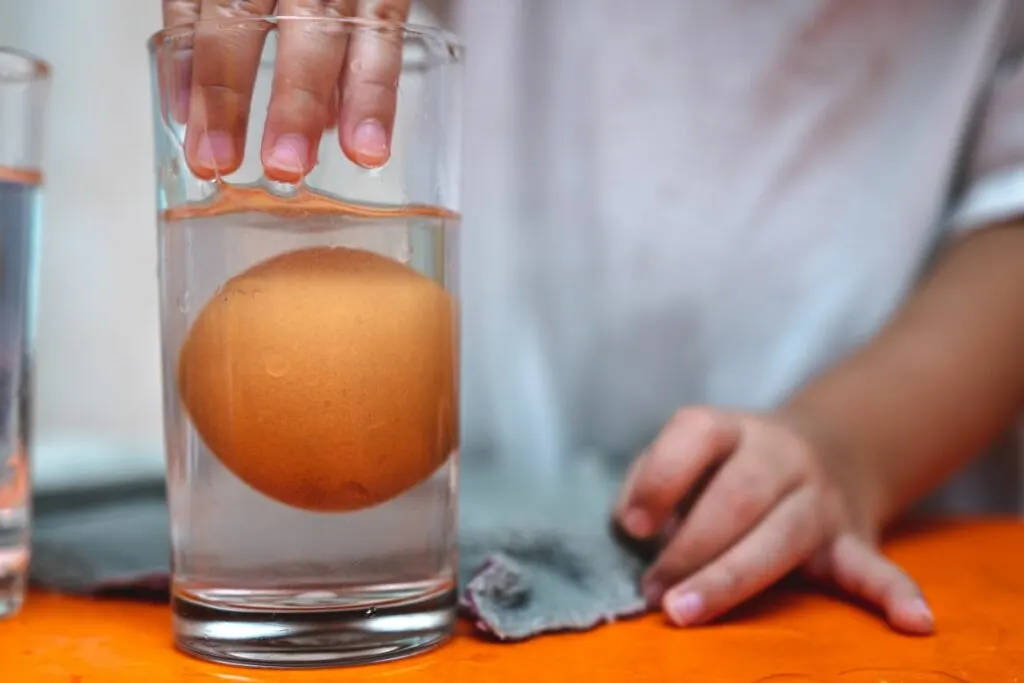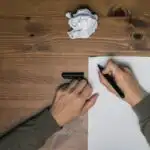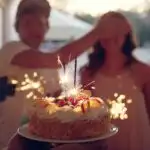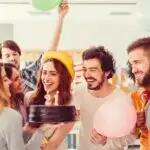Science can be a lot of fun for first graders (especially if they’re taking part in experiments that go whizz, pop and bang).
To solidify their scientific learning, and make sure they’ve fully understood the concepts, you can set them the task of completing a science project with their parents.

To avoid a free-for-all, and to take the pressure of the parents, you can provide your class with a selection of projects to choose from.
Below, we’ve listed 16 of the coolest (but simple) 1st grade science projects kids can do at home with their parents.
Get those goggles on and we’ll get to it.
1. Density Tower
A density tower is a simple experiment for first graders to try at home.
Children will need different liquids like honey, dish soap, water, vegetable oil, and rubbing alcohol; a clear, tall glass or plastic container.
The great thing about this experiment is that most of these items will be readily available at home.
Method: Carefully pour each liquid into the container, one at a time.
Start with the densest liquid, like honey, and end with the least dense, like rubbing alcohol.
Students should notice that the liquids form layers.
This experiment helps children understand the concept of density and how some liquids are denser than others.
2. Growing Crystals
Although you can buy kits to grow your own crystals, doing it from scratch is much better fun (and it’s better for the student’s learning).
To grow crystals, they will need salt or sugar, hot water, a jar, a string, and a pencil.
Method: Dissolve as much salt or sugar as you can in hot water until no more will dissolve.
Hang the string into the jar so that it’s not touching the sides or bottom, using the pencil to hold it in place.
After a few days, crystals will begin to grow on the string.
This teaches kids about the process of crystallization and how solids can dissolve in liquids and then reappear when conditions are right.
3. Shadow Tracking
First graders will need a sunny day for this science project. They will also need a toy or object, chalk, and access to a sidewalk.
Method: Place the toy on the pavement and use chalk to trace its shadow in the morning, noon, and afternoon. Observe how the shadow changes.
This helps kids learn about the movement of the Earth in relation to the sun and how it affects shadows.
4. Magnetic Exploration
For this project, children will need a magnet and a collection of small items from around the house.
Method: Children can test which items are magnetic and which are not. They can separate the items into two piles: magnetic and non-magnetic.
This introduces the idea of magnetism and helps children identify which materials are attracted to magnets.
5. Dancing Raisins
This experiment is super fun and only requires clear soda (like Sprite or 7-Up), a clear glass, and raisins.
Method: Fill the glass with soda and drop in a few raisins. Watch as the raisins “dance” up and down in the glass.
The carbonation in the soda attaches to the raisins, making them float to the top. Once the bubbles pop, the raisins sink again, illustrating the concept of buoyancy.
6. Celery and Food Coloring
This experiment will make first graders laugh while also teaching them about plant life.
They’ll need clear glasses, water, food coloring, and celery stalks with leaves.
Method: Fill the glasses with water and some drops of different food coloring shades to each glass. Place a celery stalk into each glass. Over a day or two, observe the celery, especially its leaves.
This experiment illustrates capillary action and how plants absorb water and nutrients from the soil.
7. Balloon And Static Electricity
First graders are probably already familiar with the static generated by balloons but this experiment helps them understand a little more.
They will need a balloon and small pieces of paper or lightweight fabric.
Method: Inflate the balloon and tie it off. Rub the balloon on your hair or a piece of wool. Move the balloon close to the pieces of paper or fabric and watch them jump towards the balloon.
8. Homemade Volcano
Kids of all ages LOVE a volcano experiment.
For this one, the first graders will need a small bottle, baking soda, vinegar, dish soap (for a foamy eruption), and food coloring (optional for colored lava).
Method: Place the bottle on a tray or in a container to catch the overflow. Fill the bottle a quarter full with baking soda. Add a few drops of dish soap and food coloring if desired. Pour vinegar into the bottle to start the eruption.
This classic experiment demonstrates a basic acid-base reaction.
9. Ice Melting Race
This fun experiment helps children understand the different properties of substances and how they can affect the state of matter.
They will need ice cubes, plates, and various materials like salt, sugar, and sand.
Method: Place an ice cube on several plates. Sprinkle different materials on each ice cube: salt on one, sugar on another, sand on the next, and leave one as a control with nothing added. Observe which ice cube melts the fastest.
10. DIY Sundial
The DIY sundial experiment is nice and easy and doesn’t require much to do.
All that’s needed is a straight stick (a pencil will do the job), a sunny day, and a piece of paper or a paper plate.
Method: Stick the stick through the paper or plate. Every hour, mark the end of the stick’s shadow with a stone or by drawing on the paper. Label each hour as you go.
This project demonstrates how the position of the sun in the sky changes over time and can be used to tell time.

11. Floating Eggs
This is another super easy science project for first graders – and you don’t need many items, so parents will be a fan.
This requires fresh eggs (this part is important), salt, two clear glasses, and water.
Method: Fill both glasses halfway with water. Add a lot of salt to one glass and stir until most of it dissolves. Carefully place an egg in each glass and observe.
This experiment teaches about buoyancy and density. The saltwater is denser than freshwater, which can make the egg float.
12. Homemade Compass
For this science project, first graders and parents will need a needle, a small cork or foam piece, a magnet, and a bowl of water.
Method: Stroke the needle repeatedly in one direction with the magnet. Insert the magnetized needle into the cork or foam and place it on the water in the bowl. The needle should align with the Earth’s magnetic north.
This introduces the idea of Earth’s magnetism and magnetic fields – and most kids find this one pretty awesome.
13. Coffee Filter Chromatography
This project demonstrates how different colors can be combined to create other colors and introduces the concept of chromatography. It allows first graders to be a little creative.
To do this task, they will need non-permanent markers, coffee filters, and cups of water.
Method: Draw a dot or a line with the marker in the center of the coffee filter. Fold the filter so the center is at the bottom and dip it into a cup of water (ensuring the dot/line doesn’t touch the water). Watch as the water rises and separates the ink colors.
14. Pepper And Soap Trick
This is a pretty cool science experiment which will amaze little ones.
It requires ground pepper, dish soap, and a bowl of water.
Method: Sprinkle some pepper on the surface of the water. Then, dip a fingertip into dish soap and touch the water’s surface. The pepper will rapidly move to the sides of the bowl.
This illustrates the concept of surface tension in liquids.
15. Germination Station
Demonstrating germination isn’t an instant results science project, but it’s a useful one to try with first graders – they can return to inspect the experiment every day for the first signs of sprouting.
To do this at home, they will need bean seeds, paper towels, a clear plastic bag, and water.
Method: Moisten the paper towel with water and place a few bean seeds on it. Fold the paper towel gently around the seeds and place it in the plastic bag. Seal the bag and fix it to a window with strong tape. In a few days, observe the seeds sprouting.
16. Solid, Liquid, Gas With Chocolate
This tasty science experiment will show first graders solid, liquid and gas – the three primary states of matter.
Kids and their parents will need chocolate pieces, a pan, and a freezer.
Method: Show the solid chocolate piece. Melt it in a pan to show its liquid form. As it cools, steam or vapor may be seen, representing the gas state. Finally, you can place the melted chocolate in the freezer to revert it to its solid state.
In Summary
These science projects can easily be done by first graders at home with their parents.
Most of these experiments don’t require many items, and kids will have a lot of fun with them.
Further reading: How to homeschool a 1st grade child.
- Homeschooling In High School: Pros And Cons - February 24, 2024
- How Do I Withdraw My Child From School To Homeschool? - February 23, 2024
- How To Not Go Crazy Homeschooling Kids: A Guide For Frazzled Parents - February 22, 2024









Leave a comment